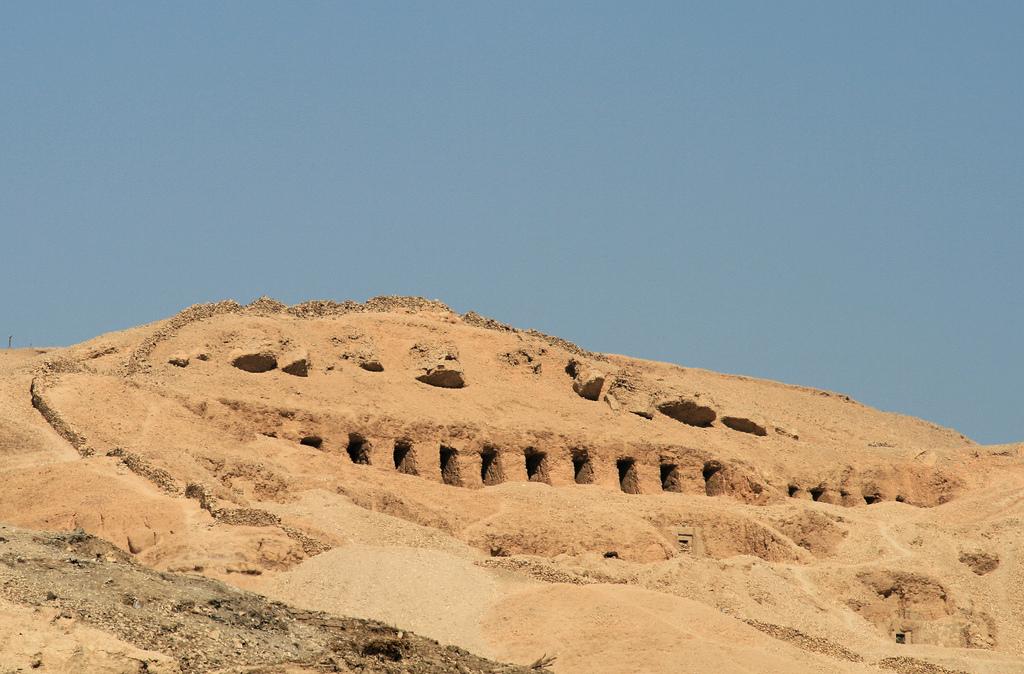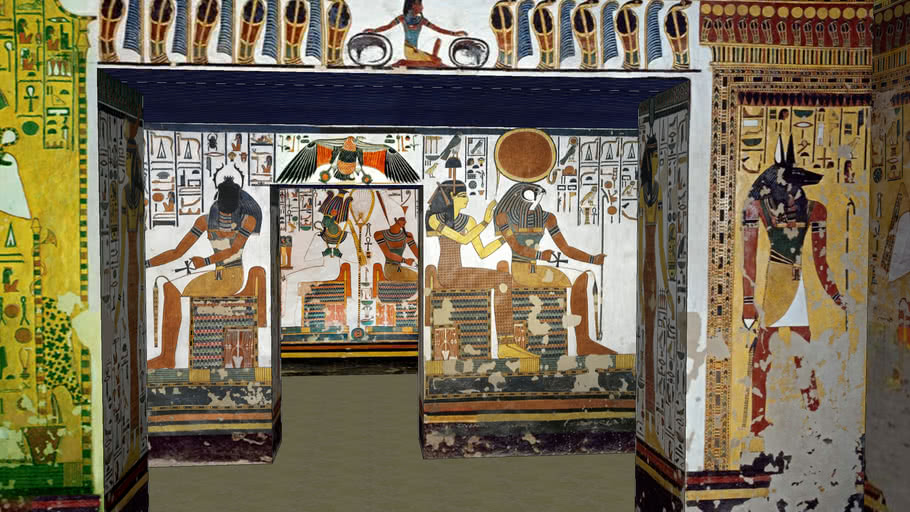Ancient Egyptians had unique beliefs about the afterlife. They thought life continued after death, leading to a new existence among the gods. To ensure immortality, they practiced mummification and placed bodies in secure locations to protect them from thieves. Initially, pyramids served this purpose. However, they did not always protect royal treasures as expected. Many golden items belonging to famous pharaohs and priests were stolen throughout Egyptian history.
To improve security, Egyptians developed a new method during the New Kingdom. They started constructing hidden tombs underground to protect the pharaohs’ and kings’ belongings, including gold and funeral items. These tombs are now known as the Valley of the Kings and the Valley of the Queens. The Valley of the Queens, a vast necropolis, contains tombs and burial chambers for many prominent queens, princesses, and princes from the 18th and 19th dynasties.

Valley of the queens
The Valley of the Queens served as the official burial site for the wives and children of the royal family. Located on the west bank of Luxor city, it lies a few kilometers south of the Valley of the Kings. Luxor, formerly known as Thebes, was the capital of ancient Egypt. This site consists of interconnected valleys with about 70 rock-cut tombs. Each tomb features long corridors leading to a main burial chamber and smaller side chambers.
Unlike the Valley of the Kings, which is grander and more majestic, the Valley of the Queens is simpler. Despite this, some tombs were designed by the same skilled artisans who worked on both valleys. The most breathtaking tomb belongs to Queen Nefertari, the great wife of Ramesses II. Discovered in the 19th century by Ernesto Schiaparelli, this tomb is famous for its unique design and vivid paintings. It has attracted tourists from around the world.
Queen Nefertari tomb

Prince Amen tomb
Young prince Amon was the heir of the throne, son of king Ramesses the third. the tomb has colored scenes of the young prince standing beside his father the king while clasping hands with god Imesty, one of god Horus sons.
Queen Tyti tomb
One of the striking tombs in the valley of the queens is queen Tyti tomb. Tyti is from the 20th dynasty is depicted in different ways. Some times as braided young girl and in some scenes she is painted as middle aged woman which is uncommon in the Egyptian art









